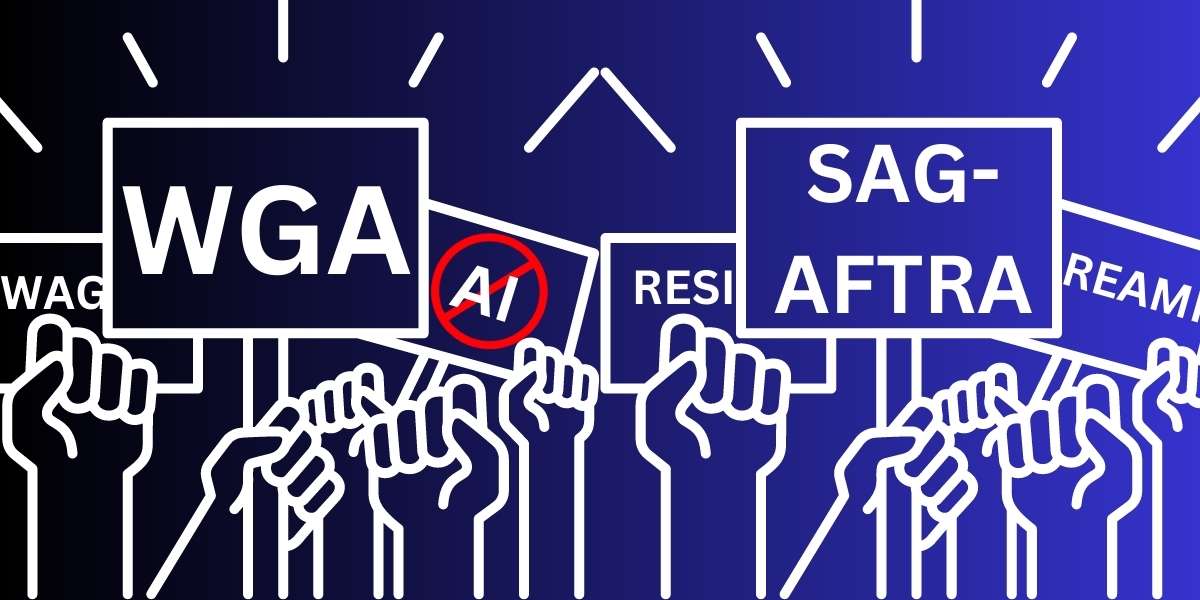WGA And SAG-AFTRA Strike: The Complete Impact On Hollywood

Table of Contents
Production Halts and Delays
The immediate and most visible impact of the WGA and SAG-AFTRA strike is the widespread halt of film and television production. This unprecedented shutdown has brought major projects to a grinding standstill, impacting both big-budget studio productions and smaller independent films.
Major Studio Productions Ground to a Halt
Major studios have been forced to postpone or completely cancel numerous projects, leading to significant financial losses. The ripple effect is substantial, affecting not only the studios themselves but also countless crew members, support staff, and related businesses.
- High-profile projects affected: The strike has impacted productions such as the next Marvel Cinematic Universe film, several anticipated sequels, and numerous television series across major networks and streaming platforms. Specific titles are constantly evolving as the strike continues.
- Financial implications: Production delays translate directly into lost revenue for studios. Postponed release dates mean delayed box office returns and subscription revenue for streaming services. The financial impact is measured in hundreds of millions, if not billions, of dollars.
Independent Film and Television Suffer
The impact on independent film and television productions is arguably even more severe. Independent filmmakers often operate on significantly smaller budgets and have less financial resilience to withstand prolonged production halts.
- Challenges faced by independent productions: Independent projects often rely on securing funding through a combination of grants, pre-sales, and private investment. The strike significantly disrupts these processes, making it incredibly difficult to maintain production schedules and secure further funding.
- Potential long-term impact: Prolonged delays or cancellations can permanently derail independent projects, leading to financial ruin for independent filmmakers and potentially hindering the development of diverse voices and narratives within the industry. The long-term effect on the independent film landscape could be substantial.
Financial Ramifications Across the Industry
The financial consequences of the WGA and SAG-AFTRA strike extend far beyond the immediate impact on production. The ripple effect is felt throughout the entertainment ecosystem and beyond.
Impact on Studio Revenue and Stock Prices
The strike has significantly impacted the financial performance of major studios and streaming services. Delayed releases and production halts directly translate into reduced revenue streams.
- Stock market fluctuations: The uncertainty surrounding the strike's duration has led to volatility in the stock prices of major entertainment companies. Investors are wary of the potential for prolonged losses.
- Potential for layoffs and cost-cutting measures: To mitigate financial losses, studios are likely to implement cost-cutting measures, which may include layoffs and a freeze on new project development.
Economic Ripple Effects Beyond Hollywood
The economic impact extends beyond the Hollywood studios and reaches various related industries and local businesses. The absence of film and television production creates a domino effect.
- Businesses impacted: Hotels, restaurants, transportation services, and other businesses that rely on the entertainment industry's spending are experiencing a significant downturn. Local economies in major filming locations are particularly affected.
- Wider economic implications: The strike's broader economic consequences include a reduction in tax revenue for local governments and a potential decrease in employment across various sectors connected to the entertainment industry. The economic recovery will depend significantly on the duration of the strike.
The Impact on Streaming Services
Streaming services are also deeply affected by the WGA and SAG-AFTRA strike. The lack of new content and delays in existing projects have created significant challenges.
Content Shortages and Release Delays
The strike has resulted in a significant shortage of new content for streaming platforms, impacting their ability to attract and retain subscribers.
- Impact on subscriber numbers: Without new releases, streaming services may experience a decline in subscriber numbers as viewers seek alternative forms of entertainment.
- Potential strategies: Streaming platforms may adopt strategies such as increasing reliance on licensed content, reality TV, or archival programming to fill the content gap.
Changes in Programming and Content Strategy
The strike may force long-term changes in programming and content strategy. The industry might see a shift towards alternative production models.
- Potential long-term shifts: The industry may explore more cost-effective production methods, potentially impacting the scale and scope of future productions.
- Shift towards AI-generated content: The increased discussion around AI in content creation might accelerate its adoption, although the implications for writers and actors remain a contentious point.
Negotiations and Potential Resolutions
The resolution of the WGA and SAG-AFTRA strike hinges on successful negotiations between the unions and the Alliance of Motion Picture and Television Producers (AMPTP).
Key Issues in the WGA and SAG-AFTRA Negotiations
Both the WGA and SAG-AFTRA have presented a list of key demands aimed at addressing concerns regarding fair wages, working conditions, and the impact of emerging technologies.
- Key demands: These include fair wages, residuals from streaming platforms, improved healthcare benefits, and regulations concerning the use of AI in content creation.
- Challenges and complexities: Reaching a resolution requires addressing the complex and intertwined issues that have fueled the strike. The demands vary in significance, making negotiation complex.
Potential Outcomes and Long-Term Impacts
The outcome of the WGA and SAG-AFTRA strike will significantly shape the future of the entertainment industry.
- Likelihood of a settlement: The length and outcome of the strike depend on the willingness of both sides to compromise and find common ground.
- Future of the relationship: The strike's resolution will have lasting implications for the relationship between studios and labor unions, potentially shaping collective bargaining agreements for years to come.
Conclusion
The WGA and SAG-AFTRA strike presents a pivotal moment for Hollywood, with far-reaching consequences across production, finance, and the overall entertainment landscape. The strike's resolution will significantly shape the future of film and television production, impacting how content is created, distributed, and consumed. Understanding the complexities of the WGA and SAG-AFTRA strike and its various impacts is crucial for anyone involved in or interested in the entertainment industry. Stay informed on the ongoing developments surrounding the WGA and SAG-AFTRA strike to understand its evolving impact on Hollywood.

Featured Posts
-
 Milwaukee Brewers Dominant 8 2 Victory Chourios Stellar Performance
Apr 23, 2025
Milwaukee Brewers Dominant 8 2 Victory Chourios Stellar Performance
Apr 23, 2025 -
 Why Middle Managers Are Essential For Company Success And Employee Growth
Apr 23, 2025
Why Middle Managers Are Essential For Company Success And Employee Growth
Apr 23, 2025 -
 Morning Retail Comparatif Nutriscore Des Produits Phares Du Petit Dejeuner
Apr 23, 2025
Morning Retail Comparatif Nutriscore Des Produits Phares Du Petit Dejeuner
Apr 23, 2025 -
 Go Ahead Entry System At Target Field Uses Facial Recognition
Apr 23, 2025
Go Ahead Entry System At Target Field Uses Facial Recognition
Apr 23, 2025 -
 Posthaste Deeper Canadian Recession Predicted Despite Lower Tariffs
Apr 23, 2025
Posthaste Deeper Canadian Recession Predicted Despite Lower Tariffs
Apr 23, 2025
Latest Posts
-
 Nyt Strands Hints And Answers Game 403 Thursday April 10
May 10, 2025
Nyt Strands Hints And Answers Game 403 Thursday April 10
May 10, 2025 -
 Solve Nyt Strands Game 403 Hints For Thursday April 10th
May 10, 2025
Solve Nyt Strands Game 403 Hints For Thursday April 10th
May 10, 2025 -
 April 12th Nyt Strands Puzzle 405 Hints And Solutions
May 10, 2025
April 12th Nyt Strands Puzzle 405 Hints And Solutions
May 10, 2025 -
 Nyt Strands Saturday April 12th Game 405 Answers And Clues
May 10, 2025
Nyt Strands Saturday April 12th Game 405 Answers And Clues
May 10, 2025 -
 Unlocking The Nyt Strands April 9 2025 Puzzle With Clues And Spangram
May 10, 2025
Unlocking The Nyt Strands April 9 2025 Puzzle With Clues And Spangram
May 10, 2025
